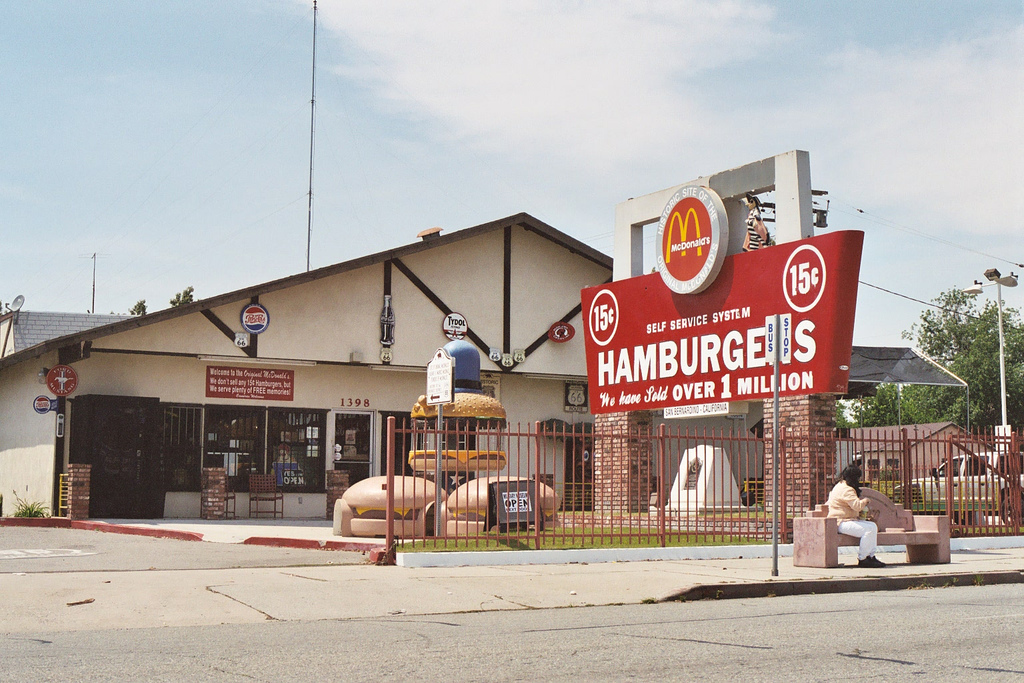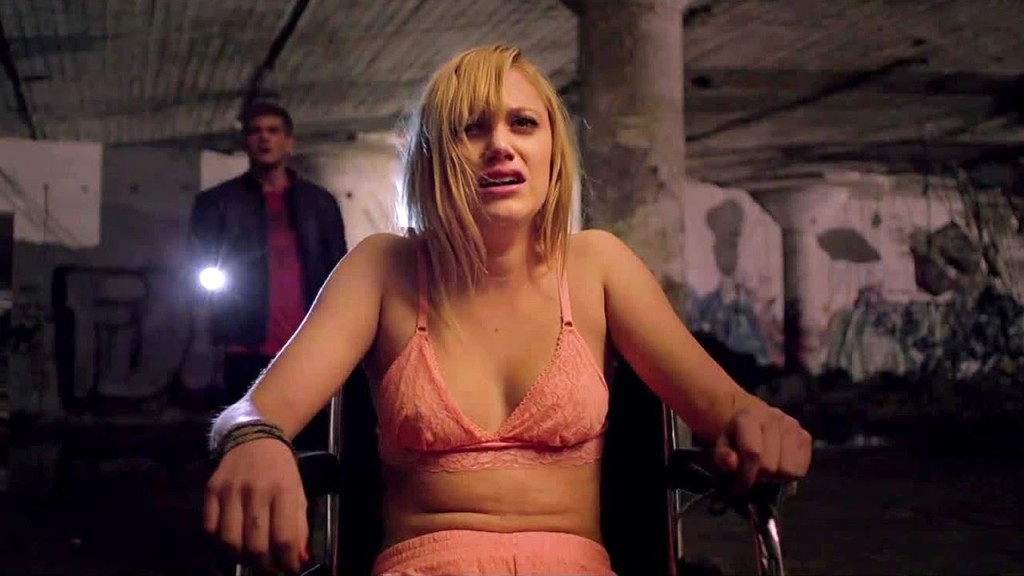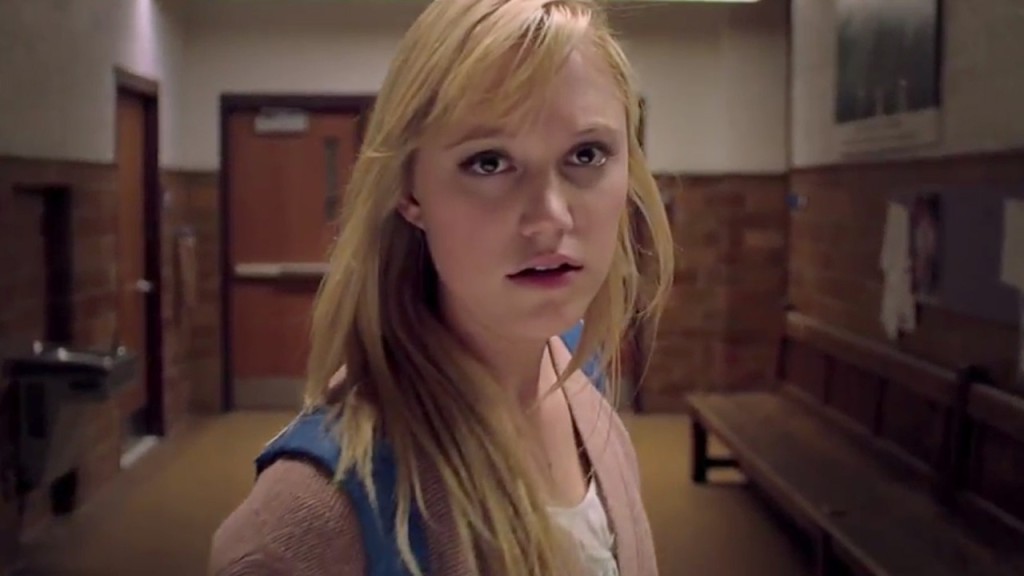It’s a busy day here at Scriptshadow. I’ve been checking out the Scriptshadow 250 entries as well as finishing up some consultations, so I don’t know how long this article is going to be. What I can say is that I’ve already started to spot some common mistakes in the entries and I want to make sure they don’t keep happening. So today, I’m giving you three tips that should help improve your Scriptshadow 250 entry as well as make you a better overall writer. As always, I offer this reminder. Be mindful. With great power comes great responsibility.
ALWAYS FIND FRESH TAKES ON OLD TROPES
There are certain tropes in screenwriting that are unavoidable. They seem to go hand-in-hand with the genre they’re written in and there isn’t anything wrong with that. What is wrong, however, is giving the reader the same old version of the trope. It’s your job to find a fresh take on it, something that makes it feel new and exciting, and not business as usual. Take the well-worn cliché of a down-on-his luck gambler whose bookie sends his thugs in to demand a payment. This scene often takes place at a bar, or maybe just outside of the character’s apartment as he’s leaving. The bookie slams him up against a wall and says, “You’ve got 1 one week to find the 50 grand. Or else you’re dead.” Sound familiar? Yeah, if you knew how many times I had to read this scene, you’d never write it again.
The thing about the “fresh take” approach is that it requires NO EXTRA SKILL on your part. You don’t have to be more talented or more experienced. The only thing it requires is time and effort. For that reason, there should be no excuse. I read a script once where our main character was at a school function, watching his child run around and play with the other kids, and the bookie arrived, dressed just like any other parent (his tattoos still peeking out of his shirt though). He very quietly and calmly stood next to our main character, and, while watching the children, proceeded to tell him that he was going to kill him in 5 days if he didn’t come up with the money. The irony of a bookie demanding money juxtaposed against the innocence of kids playing was exactly the fresh take the doctor ordered. If there’s any trope you come across – any plot beat that you’ve seen in a lot of films – it’s your screenwriting DUTY to do something fresh with it.
WRITE YOURSELF INTO CORNERS
I’ve been reading a lot of scenes, lately, where the writer writes his hero into a “tough” situation that isn’t tough at all. Therefore, when the character makes his incredible “escape,” it’s as exciting as watching reruns of Two and a Half Men. What’s happening here is that the writer’s scared to make things too difficult for their hero, lest they not be able to figure out a way to get him out of trouble. What the writer doesn’t realize is that the reader always feels this. They know you’re playing it safe. Which is why the character’s escape lacks suspense.
From this point forward, be bold. When your character is facing a bad situation, make it as bad as it can possibly be, even if, at first, you don’t how you’re going to get them out of it. It’ll be scary, but that’s exactly what you want. If you’re unsure, the reader will be unsure. Then, like a detective, write down a list of the ways the character might get out of the situation. It won’t be easy, and it shouldn’t be. If the solution comes to you right away, the situation wasn’t dangerous enough. But eventually you’ll figure it out. Recently I read a script where the co-pilot of a small plane planned to kill his captain. The co-pilot sabotaged the plane, grabbed a parachute, and jumped out. The captain, while admittedly having to hurry up before the plane plunged into a field, merely had to find the other parachute and jump to safety. I told the writer to have the co-pilot tie the captain up before jumping. And I told him to have there only be one parachute, the one the co-pilot took. Do I have any idea how the pilot’s going to get out of that situation? No. Which is exactly why I’m a lot more interested in what happens next.
FLIP THE SCRIPT IN A SCENE
You may have heard me mention that I’ve been watching House of Cards recently. Watching the episodes one after another has allowed me to catch a few of their tricks. One of the moves I notice a lot is the “flip-the-script” scene. This is where it looks like one character is in control of a scene, only for a “twist” to occur at the scene’s midpoint that results in us realizing the other character was in control the whole time.
For example, there’s a (non-spoiler) scene where a reporter from the Washington Post is at a bar, and this beautiful woman starts flirting with him. For the first half of the scene, she’s completely in control, manipulating our helpless reporter with her looks and sexuality. Then, just as it’s looking like he’ll succumb, he casually pulls out a picture of a girl he’s been looking for and places it in front of the woman. He asks her if she’s seen her. It turns out our bar woman was an escort who walked in the same circles as the girl our reporter was looking for. All along, he was playing her. The simple truth is that if every scene goes according to plan, you might as well put a “nap” tag on your script. “Flip-the-script” scenes send a jolt into the scene, and by association, the story, letting the reader know that not everything will go according to plan.
Genre: Biopic
Premise: Follows the story of McDonald’s “founder,” Ray Kroc, as he revolutionizes the fast food industry and creates a dynasty.
About: The Weinstein Company picked this up after it appeared on last year’s Black List. The film will be directed by John Lee Hancock and headlined by the rejuvenated Michael Keaton. The script was written by Robert Siegel, who rejuvenated another actor’s career (Mickey Rourke), with his script The Wrestler. Siegel started out his career writing comedy scripts before he realized he wasn’t very funny. Once he switched to drama, everything took off. (Useless fact – Ray Kroc was born in my hometown of Oak Park, Illinois!)
Writer: Robert Siegel
Details: 113 pages (April 4, 2014 draft)
A few years back, I was driving out of Los Angeles and within a few hours, I was starving. I stopped at a gas station to fuel up and asked a gnarly-looking local there if he knew of any good places to eat. “You bet,” he replied, “Del Taco.”
I mentally shook my head, saddened by this reality. Del Taco? The bad Taco Bell ripoff that used ketchup with a spritz of lemon as its taco “sauce.” This is what America had become? Where the average person thought “Del Taco” was food?
The man must’ve been reading my mind because he smiled and said. “Oh no, I know what you’re thinking. This isn’t that. These are real authentic tacos. The kind that make you think of ballerinas on a summer day.” I wasn’t quite sure what the ballerina comment was about, and was still skeptical, but I was also hungry. So even though I had to take some convoluted route that included memorizing a dozen turns, I found the Del Taco, ordered up these “authentic” tacos, and was promptly blown away.
They were DELICIOUS.
I even ordered a few more for the road. And for the next hour, I contemplated this strange occurrence. How was it, I wondered, that the Del Taco I’d always known served thin pasty processed garbage, yet this Del Taco, which existed in the exact same state, was a cornucopia of quality ingredients mixed into the motherload of deliciousness. Well, after reading The Founder, I found my answer.
 Speedey! The original McDonald’s mascot!
Speedey! The original McDonald’s mascot!
In 1954, Dick and Mac McDonald were running the best fast food stop in California. Unlike the drive-up food joints that were popular at the time, the McDonald brothers revolutionized food in a way no one had thought to before. They actually made food FAST. And in case you were thinking, “Yeah, at the expense of quality,” you’re wrong. The original McDonald’s guys desperately cared about quality. In fact, it was half the secret to their success. It wasn’t until Ray Kroc came around that all that changed.
Kroc was a late bloomer, a 52 year old desperate salesman who travelled the U.S. selling mixing machines. Kroc was one of those “get rich quick” guys, always looking for the million dollar idea. He found it in 1954. He just didn’t know it yet. After Kroc shockingly received his McDonald’s burger 15 seconds after ordering it, he demanded to get a tour of the McDonald’s store from the brothers.
Kroc was amazed at the efficiency of the operation and wanted in. He convinced the guys to let him start franchising back in his home state, Illinois. Kroc made a mistake though. He didn’t read the contract! As such, he only found out later that he’d received just 1.4% of profits from each franchise. That wasn’t even enough to RUN the franchises.
Kroc complained to the brothers but they stood strong on the percentage, pointing to their ironclad contract that guaranteed the brothers total control over everything that had to do with the stores. Then everything changed. Kroc met a businessman named Harry Sonneborn, who suggested to Kroc that a way to circumvent the contract was to buy up land and force the franchisees to build their McDonald’s on that land. This genius idea meant that Kroc would OWN the land the franchises ran on, giving him a constant stream of income. This is the moment that changed McDonald’s, the moment that allowed Ray Kroc to take over the world.
Once Kroc got filthy rich from the real estate side of the business, he decided to simply STOP HONORING the contract he made with the McDonald’s brothers. Just stopped! He openly said to them, “Sue me.” And they knew he knew they couldn’t do anything about it. They were a mom and pop stand. He was a superpower. Seeing no other option, they sold the company to him. This lead to one of the saddest things I’ve ever read. Kroc had his lawyers force the brothers to change the name of their original McDonald’s because it now infringed on his copyright. To add insult to injury, he would then open a McDonald’s across the street from them, which eventually drove the original McDonald’s out of business. May the Big Mac live forever more.
So back to my Del Taco story. Had you eaten at any McDonald’s in, say, 1965, you may have had some mass-produced garbage burger. But had you gone to that original McDonald’s, before Ray destroyed it, you would’ve had the best burger in town. Maybe the best way to understand what McDonald’s should’ve become is to look at In and Out. They still live by that same mantra McDonald’s started with. Tiny menu so you ensure great quality and fast service.
As a screenplay, The Founder plays out like a lot of biopics, which is to say the structure is fast and loose. There are no clear act turns. The structure is dictated less by plot beats than by where the real life story took the people. There isn’t even any conflict until 45 pages into the screenplay. That’s the first moment Kroc disagrees with the McDonald brothers.
What’s surprisingly about this script though is how dialogue-driven it is. These 113 pages go by in an hour because it’s dialogue dialogue dialogue. And it’s not “screenplay” dialogue. By that I mean it’s not forced conflict dialogue. Rather, it’s revelation-based. Each new conversation seems to introduce a fascinating component to the story. When Sonneborn comes in, for example, with his real estate idea, it’s this game-changer where you know not just the relationship between Kroc and the McDonalds is going to change… but that the whole WORLD is going to change.
 The very first McDonald’s is now a museum.
The very first McDonald’s is now a museum.
As with every biopic, you need a fascinating main character, and Kroc is exactly that. I want you guys to pay attention here because when you’re commissioned to tackle a subject, figuring out whose point of view you’re going to tackle it from is a key component to making the story work. If somebody told you to write a story about McDonald’s, you just as well could’ve told it from the point of view of Mac or Dick McDonald. Those were the original creators. The thing is, those guys seemed to be as wholesome as apple pie. You’re not going to get nearly as much drama out of them.
Kroc is the way more interesting character. He’s the salesman. He’s the guy who starts off with good intentions but gets lost in his obsession to expand at all costs. Those are the characters you want to follow – the ones who compromise their morals. They’re way more interesting than the good guy. I mean, Kroc has the gall, at the end of the script, to call himself “The Founder.” How evil is that?
Siegel adds a final genius touch to the script. He builds this storyline out of Kroc wanting to switch the milk shakes to milk shake mix in order to save money on refrigeration costs in all his stores. He fights the McDonalds tooth and nail on it, who refuse to compromise quality (“We’re not making milkshakes without milk, Ray!”). In the very end, when he takes over the company, Ray finally makes the change, and it’s the harbinger, of course, of the direction McDonald’s would take from that point forward, compromising just about everything for profits. It’s the reason why, these days, our Big Macs come to us courtesy of 10 minutes under a heat lamp.
The last time I read something like this was The Social Network. It’s not quite as good as that script, but it’s still a tasty read. And most of you should have it if you got a hold of that Blacklist folder. Check it out!
[ ] what the hell did I just read?
[ ] wasn’t for me
[ ] worth the read
[x] impressive
[ ] genius
What I learned: Robert Siegel’s success once he changed from writing comedy to writing drama reminded me how important it is to write in the genre you’re actually GOOD AT. This may sound obvious, but I see a lot of writers lured to another genre by a good idea despite being weak in that genre. They figure, “Well, it’s a good idea, so I should write it.” The results of this approach are almost always bad. Most writers know what genres they’re best in. My advice would be to stay inside those genres.
Genre: TV Pilot – Drama
Premise: When their thought-to-be-murdered son arrives back in town 12 years after he went missing, a family who’s moved on from him must learn to rebuild.
About: This one comes from Shonda Rhimes disciple Jenna Bans, who’s written on Grey’s Anatomy and Scandal. These Rhimes writers really know how to weave a good tale. Rhimes must hold some class about how to add the perfect amount of twists and turns to an episode, because whenever I read anything she’s involved in, I never get bored. There’s always some surprise coming that throws everything off its axis. The pilot for Flesh & Blood is being shot for, not surprisingly, ABC, and will star superstar character actor Joan Allen. No word yet on if it’s been picked up. The market is starting to get saturated with these “characters who return after a long time” shows and that might scare ABC.
Writer: Jenna Bans
Details: 62 pages – Revised Network Draft (January 18, 2015)
 Happy St. Paddy’s Day! It’s magically delicious!
Happy St. Paddy’s Day! It’s magically delicious!
So I’ve FINALLY started watching House of Cards. I didn’t think I’d be interested in a show about politics but I’ve been pleasantly surprised. The show is really well written, driven by clear goals and high stakes that keep all storylines on track and interesting. It just goes to show, if you write a show with compelling characters who have clear objectives and those objectives actually mean something to the characters, you can write about anything and make it good.
Speaking of “Cards,” it’s crazy how a career can blossom in this industry while others stagnate or never go anywhere. Beau Willimon was a nobody until he wrote Farragut North, which finished number 2 on the 2007 Black List. He had to wait 4 years for the film to get made (it was later retitled “Ides of March”) but the next thing you know, he gets in on the ground floor of Netflix’s original programming boom and is the creator of one of the biggest shows in television (House of Cards).
It’s why I keep telling you guys – it’s fine to break in with a feature, but have that TV pilot ready. That very well may be how you become a superstar. It’s why I write these Tuesday TV articles.
As far as today’s pilot, I wasn’t expecting much. I just went down a list of pilot scripts in search of something that sounded good. This had a nice hook to it so I decided to give it a shot (another reason that a good hook helps – many people are just like me, scrolling down a list of loglines for something that sounds “interesting.” Don’t be the idea that doesn’t sound interesting).
Claire Warren had the perfect family. Her husband, Peter, was tall, handsome, and smart. Her teenage son Danny was a high school football star. His younger sister, Willa, 14, was a mini-version of Claire, smart and ready to take over the world. And then there was Adam, the baby at only 8 years old. The apple of Claire’s eye.
Until she takes her eyes off the kids at the park, and Adam wanders off, never to be seen again. A manhunt is led by an ace young cop named Nina, who quickly pinpoints the neighbor, Hank, a registered sex offender, as the chief suspect. Although Adam’s body was never found, Hank was convicted, and sent to prison. That was that. Life moved on.
Until 12 years later, when a young man shows up at the police station, claiming he’s Adam. Things have changed a lot since 12 years ago. Claire is now the mayor, Peter a motivational speaker who lectures about loss, Willa a religious nut, and Danny a drunk. Each of them are notified of the miracle, which has since been confirmed by DNA, and the unthinkable happens – Adam moves back in with the family.
Claire loves her son more than anything, but is already thinking about how it might help her campaign for Governor. Hank, who is now an innocent man, is released from prison immediately, a chip on his shoulder bigger than the state penitentiary. And Nina, who put Hank away, has to revaluate everything she thought she knew. But the first order of business is to find out who was holding Adam captive for twelve years and arrest him. So a new manhunt begins. But are they going to find anyone? Or is Adam even telling the truth?
One of the things I’m starting to notice about TV is that if your hook is either non-existent or short-lived (today’s hook, while cool, is essentially limited to the first episode), then the characters themselves have to be “bigger” in some way. Adam isn’t coming back to a normal boring everyday family. Instead, his mother is the Mayor. Because of that, everything that happens with Adam feels “bigger” because it’s happening on a bigger stage. If this were some poor family nobody cared about living in a trailer, the pilot’s going to feel pretty tiny and meaningless.
Another thing that’s becoming apparent to me the more TV I watch is the importance of exploring multiple characters in-depth. In features, you’re so focused on “Main Character” “Main Character” “Main Character” – and rightfully so. The main character in a feature has to be powerful and active enough to propel the story through a limited run time.
But in TV, and even in the pilot, you have to show that you’re ready to explore multiple characters on an intense level. So we don’t just get scenes following Claire. We get scenes following Nina, who stands outside the courthouse when Hank’s released, wondering what the hell she’s done. We get scenes with Hank, who walks down the noisy glow of an American mall for the first time in 12 years.
One of the questions most producers will ask with a pilot is “Does it have legs?” Is this a story that can take place past a few episodes? One of the ways you achieve this is through multiple character exploration in your pilot. Give these characters their own scenes (not just scenes when they’re around your main character). Show us what they’re struggling with so we can anticipate what will happen in later episodes. For example, when I see Hank walking through that mall, looking at the small children, I know he’s a grenade waiting to explode. I can see that happening in episode 5, or 10, or 15.
Then there’s Nina. Her whole career has been built on being perfect. This screw-up now puts all of that in doubt. And you sense that that’s going to eat at her. So again, I’m anticipating I’m going to see this girl fall apart, or at the very least struggle through some tough shit before she gets her perp.
Finally there’s the family. Claire and Peter have built an industry on the loss of their child. How do you now keep those careers going when the child has returned? Add on top of that the mystery box that is Adam himself. Is he really their kid? If he is, why does he seem to be hiding something? These are the things that tell me there’s more to this show than a pilot.
All in all this feels like a cross between Gone Girl and Little Children. The big glossy national coverage angle of a missing person case mixed with that dark eerie look at a rich suburb’s underbelly. That sounds like a cool show. I hope it lives up to the script.
[ ] what the hell did I just read?
[ ] wasn’t for me
[xx] worth the read
[ ] impressive
[ ] genius
What I learned: Flesh and Blood jumps back and forth in time a lot (we keep going from the present to the past, when Adam was taken). If you’re doing constant flashbacks in your script, consider italicizing the past stuff. It’s visually VERY HELPFUL to the reader. When the writer doesn’t do this, I occasionally find myself confused about if I’m in the past or present, which can totally screw up my interpretation of the story. It is a risk though. Some readers don’t like the eye-strain italics cause. So proceed with caution!
Genre: Horror
Premise: A young woman inherits a curse where she’s followed by an entity that cannot be killed. The only way to get rid of it is to pass the curse on to someone else.
About: “It Follows” has been playing the festival circuit for a year, gaining momentum via ecstatic reviews from both critics and festival-goers alike. The film opened this weekend in four theaters across the U.S., grossing an average of 41,000 per theater. That’s the highest per-theater average of the year. It’s set to expand next weekend, and if it continues doing well, will continue to expand. Writer-director David Robert Mitchell is an unconventional choice for the most buzz-worthy horror director of the year. His only previous film was an indie comedy coming-of-age film titled “The Myth of the American Sleepover” and he claims that he’d like to keep jumping from genre to genre instead of being pigeonholed into horror.
Writer: David Robert Mitchell
Details: 100 minutes
A few people planning on submitting horror screenplays to The Scriptshadow 250 Contest have asked me, “What makes a screenplay scary?” And I reply, “Bad dialogue.” Haha, Carson. But seriously. You mean what makes a scary screenplay? Well, that’s a little harder to quantify. But I’ll tell you where it starts. It starts with making the reader believe in the characters and the world. The more realistic you can make the people inhabiting your story, the more we’ll believe they’re “real” like us. And thus, whenever they encounter dangerous situations, we won’t just be scared, we’ll FEAR for them. And I think that’s an important distinction to make. Being “scared” is fleeting and cheap. Genuine fear strikes deeper.
Now I’ll be the first to admit that that paragraph is somewhat gibberish without context. Anyone can say, “You have to make it more real n stuff!” So let me put it another way – If you’re trying to write a scary movie, you’ll fail. If you’re trying to write a movie about people in a scary situation, you’ll succeed. Do you see the difference? One is about cheap scares. The other is about a person experiencing fear.
And that brings us to It Follows, one of the more fascinating horror films I’ve ever seen. Now I’m not here to proclaim this film perfect. Actually, the screenplay is somewhat lacking, which I’ll get to later. However, the writer-director, Mitchell, seems to be aware of his limitations as a writer, and camouflages them in a way where they’re practically invisible. It’s borderline miraculous how he pulls it off. And it goes to show the advantage the writer-director has. He can hide weaknesses in a script inside the filmmaking, a luxury the spec writer doesn’t have.
The plot here follows 19 year-old Jay (a female – I’m ready to give up trying to stop writers from giving their female characters male names), who’s trying to navigate the uncertain world of post high school. She meets a hot dude, Hugh, goes out with him, has sex with him, only to then be strangled by him until she passes out.
She wakes up strapped to a chair in an abandoned building where Hugh promptly apologizes, and informs her that he had sex with her to transfer this “curse” to her. The curse, he explains, means you will be followed by something, an entity of sorts, who will try to kill you. The only way to get rid of the curse is to have sex with someone else, passing it on to them. But if “it” gets to you, it will start going right down the line of the curse. In other words, if it kills her, it will come back and kill him, and so on and so forth. So please find someone else and transfer it quickly. “It should be easy,” he encourages her. “You’re a girl.”
That Hugh, what a charmer.
So Jay starts seeing people follow her that nobody else can see. And these people seem to be taking the form of past curse kills, people down the sexual line. This is where It Follows gets interesting. As we see the people following her (an old man, a mother, her father) we get these glimpses into the underbelly of this town and who’s had sex with who. It’s clear, in some cases, that rape was involved. And in others, it’s pure speculation – such as where did Jay’s father, who’s already dead at the beginning of the film, fall into this line? Who did he have sex with? It’s all rather mind-trippy, and the secret sauce that makes this horror story unlike any other – and that’s the thing we’re all trying to achieve – creating something unlike anything else.
Okay, let’s start with the screenplay here. This screenplay is suuuuuuuper-minimal. Which wouldn’t have worked on the page as a spec. Everyone would’ve said, “We need to explain this curse better. We need a scene where we explain the backstory of the dad,” and to be honest, I probably would’ve been one of them. On the page, it would’ve seemed like barely anything was going on.
But here are the things that directing can bring that screenwriting cannot. Cinematography, score, and overall vision. And in these areas, Mitchell knocks it out of the park. This is the first “real” horror film I’ve seen in forever where it doesn’t look like a Hollywood costume designer dressed all the characters. The characters are all wearing what real people wear and that went a long way towards making the characters feel authentic (see the importance of that back in the opening paragraph). Ditto the locations. We were never on a set or a perfectly chosen house in the perfect neighborhood. It looked like REAL America. That went a long way towards suspending my disbelief. That’s what I mean by vision.
Then there was the score. Which was really eeire. There were just these long drawn-out horns that never seemed to end and they added an unease that’s pretty much impossible to add on the page. Coupled with the amazing cinematography, these shots set a mood for the film that was like no other, which is one of the reasons the film is playing so well. It doesn’t feel like anything else you’ve seen. I mean, at one point, there’s an 870 degree shot. That’s right. Mitchell places the camera down, and slowly spins it around as we catch one conversation going on in one room, while one of the entities keeps getting closer and closer every time we pass the window. It’s super-freaky.
Because you’re so pulled in by these atmospheric touches, you’re not thinking about the fact that the story is far from perfect, or even logical for that matter. Jay’s mother lives in the house where Jay’s loudly attacked a couple of times, but seems to sleep through all of it. She’s also never around to offer support after Jay is essentially raped. The focus is squarely on the kids, which I think it should be, but this oversight was borderline ridiculous.
The minimalistic writing approach does help in some cases though. Paul, the geeky best friend who’s in love with Jay, engages in a satisfying emotional arc with her that’s spared from the overwriting that plagues most Hollywood scripts. We don’t exaggerate the big plot turn where she finally falls for him or anything like that. It’s all a lot more subtle, and helps the relationship achieve exactly what the rest of the script has achieved – a sense of realism.
So does this mean you should all go start writing minimalistic screenplays with barely any plot beats and parents who don’t know that their children exist? Assuming you’re not writing the next Peanuts movie, I wouldn’t recommend it. Actually, It Follows has an ace up its sleeve that allows it to pull this risky move off. It’s something I’ve brought up a lot recently: Come up with a concept that does the work for you.
The concept here – this notion of someone following you, trying to kill you, that in turn can’t be killed – is what keeps the story moving without Mitchell having to do much. The scenarios write themselves. Girl in a house, friends don’t believe her, then one of these things walks in, even though the friends can’t see it, and she must run for her life. This is the basis for most of the scenes in the screenplay, which are just set in different locations. But they work because the situation is freaking scary! Imagine being in a public place and anyone you see could be there to kill you. You’d go nuts!
On the flip side, I’ll read a script where there’s a ghost in a house and it runs out of juice quickly because the concept isn’t providing enough for the writer to work with. So you always want to make sure you have a concept that creates scenes for you. That way you won’t be sitting there on page 50 going, “Uhhhhh, what do I write next?” A good concept will fuel the majority of your scenes for you.
I’d recommend everyone go see this movie. It’s definitely “indie,” but it’s way more accessible than, say, “The Babadook,” which resulted in me losing recommendation privileges with a couple of my casual moviegoing friends (“That was borrrr-ing” said one. “I don’t get it. There’s a children’s book that attacks people?” said another). What’s cool about It Follows is it still has a little camp left in it, a little bit of John Carpenter’s Halloween, so it feels more mainstream in that sense. Oh, and one last thing. If you come out of this film wondering where you can find a clam-shell reader, I’m sad to say I checked and there is no such thing. You’ll have to see the movie to understand this. Let me know what you think when you do!
[ ] what the hell did I just watch?
[ ] wasn’t for me
[ ] worth the price of admission
[x] impressive
[ ] genius
What I learned: “Concept” is the alcohol at the party. It does the hard work for you. If you’ve ever been to a party without alcohol and you feel the strain in the room as everyone tries really hard to talk to each other and look interested, you know what I mean. Give everyone drinks, however, and they loosen up, stop worrying, and start having fun. In other words, alcohol takes the strain out of the party. A good concept does the same. It lubricates the story so that everything just flows naturally. Of course, you can also bypass this analogy and just get drunk. Which should help your writing as well.
You know the deal. In between writing scenes for your Scriptshadow 250 entry, sample today’s amateur offerings and help the writers with some constructive feedback. Also, vote for the winner at the top of your comment. If you only have time to read and help one writer this week, check out I Shall Be Released. I don’t think I’ve ever known someone to be so passionate about a screenplay. Greg really cares about making this script the best it can be and he’s a dedicated Scriptshadow reader and fellow commenter. Good luck to him and everyone else!
Title: I Shall Be Released
Genre: Drama / Biopic
Logline: Losing his voice to cancer, Levon Helm reflects on his life with The Band, and how their meteoric rise to fame comes with a heavy cost.
Why you should read: I grew up listening to The Band. Not from the dull playback of a stereo, but from backstage at the concerts my parents would bring me to, and from the comfort of Levon’s living room when we went to visit. My family shared a close relationship with Levon, Rick, and Richard for over thirty years. When I left college, Levon told my father that he would do anything for me, and suggested I consider pursuing a book or film with him. Now that our friend has passed, I want nothing more than to secure his legacy, and bring the personal insights I have into the man to the silver screen, so that he, his music, and the impact he had on a generation of rock and rollers can live on.
Title: The Beard
Genre: Sex Comedy
Logline: After landing a reality TV show on Bravo — the gayest network on television — a straight YouTube star, whose popularity hinges on the world’s belief that he’s gay, hires a “beard” to keep up the front. Suffice it to say, things don’t go as planned.
Why you should read: In the wake of R-rated comedies like Neighbors, 21/22 Jump Street and This Is The End — films that absolutely cracked me up — I set out to flip the bromantic comedy on its head while sending up reality TV shows for good measure. Thus the concept behind THE BEARD was born, and I gotta admit, it was a shitload of fun bringing it to life. I wrote the first draft pretty quickly and submitted it to Carson for a consultation. He thought there were some issues with the execution, but overall, he thought the script was “very funny” (which he says is rare). The biggest problem he had was that he didn’t care for any of the characters. So I’ve revamped the structure and streamlined the execution, and tried my best to make unlovable characters lovable. Now I need a second opinion! :) Basically, I need to know if the humor and execution of the story makes up for its unsympathetic characters. Please give it a read and let me know what you think. But be forewarned: This script is VULGAR with a capital V.
Title: Thy Enemy
Genre: Action/Thriller
Logline: After learning his estranged brother is a spy, a disgraced FBI cadet goes rogue to stop his sibling from detonating an experimental nuke in New York City.
Why you should read: In 2011, I met Shane Black. We were both waiting at a crosswalk after a lecture he gave. I dared to ask him a question: “What’s your biggest fear when you open up a script?” He thoughtfully replied: “Interchangeable action scenes that don’t affect the story or characters. I see it all the time and it saddens me. Set pieces must have consequences or what’s the fucking point.” The light changed. Shane was gone. I never forgot his words while I wrote this beast of a script. Thanks, Shane. — And thank you to all of Scriptshadow’s contributors. Readers here deserve a lot more back and forth from candidate writers. Don’t see enough of it. So, if picked for AOW, I 100% guarantee that I’ll be available to interact with readers. No excuses. It’s the least I can do for a community I’ve benefited so much from.
Title: Blind Curves (AKA “The Shot”)
Genre: Crime/Thriller
Logline: After accidently killing a female hostage during a botched robbery, LAPD Officer Michael Egan is exiled to a small desert town, where he’s forced to deal with his estranged daughter and face his greatest fear come true.
Why you should read: This script has tortured me for the past four years. Just when I thought it was “finished”, I’d get feedback that would prompt another rewrite. Last year, this script made it to the quarter-finals in the Bluecat competition (Top 5% of over 4,000 submissions). I was elated but knew deep down why the script didn’t place higher. It became my poster child for the adage “learn to cut your darlings” and I shelved the script for nearly a year. The script continued to plague me, I knew what needed to be fixed but resisted making the change. Finally, I broke down and dismantled the whole thing and did what needed to be done. This script is the result of letting go, listening to your gut and not being content with just getting to “Fade Out”.
Title: Be a Hero
Genre: Action-Comedy
Logline: After accidentally killing a beloved vigilante superhero, a smartass slacker takes over as defender of the city to cover his tracks, but soon finds himself being hunted by a psychotic crime lord.
Why you should read: Well, I’m a young, fairly inexperienced screenwriter looking to kickstart my career. I believe you should give my script a shot because have you ever met someone from Ireland who wasn’t talented or awesome? No, of course you haven’t. We’re a wonderful people. But while we have a talented, artistic and creative population of ginger alcoholics, we’re also a country that often gets overlooked on a global level. This is especially true in the film industry. We have so much to offer, with so little opportunity. So, this struggling ginger alcoholic would kindly ask that you do his career a major favour by checking out his little screenplay. I would be ever so appreciative, and I think you’ll enjoy the script if you give it a chance.







